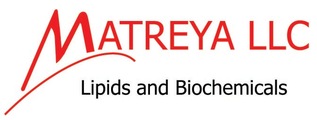      |

 通过认证 [诚信档案]
通过认证 [诚信档案]

| Cat. Number |
1523
|
| Chemical Name |
N-十七烷酰神经酰胺三己糖苷 N-Heptadecanoyl ceramide trihexoside
|
| CAS Number |
53674581-0
|
| Mol. Formula |
C53H99NO18
|
| Mol. Weight |
1038
|
| Qty 1 |
500µg
|
| Appearance |
solid
|
| Application Notes |
98+%,TLC; identity confirmed by MS
|
| Synonym |
N-C17:0-Ceramide trihexoside; N-Heptadecanoyl globotriaosylceramide
|
| Solubility |
DMSO, hot methanol, chloroform/methanol, 2:1
|
| Storage condition |
-20℃
|
| References |
Application Notes: This product is a well-defined CTH containing the uncommon heptadecanoic acid acylated to the ceramide making it ideal as an internal standard and for biological studies.1 Ceramide trihexoside (CTH) is a glycosphingolipid found mostly in mammalian cell membranes. It is involved in cellular signaling and has been identified as a receptor for various toxins including shiga toxins and shiga-like toxins.2 Some toxins, such as veratoxins from Escherichia coli, require specific fatty acids on the ceramide portion of CTH to show affinity in binding. An accumulation of CTH in the cellular membranes due to a lack of alpha-galactosidase to convert it into lactosyl ceramide results in Fabry disease.3 This product can be used as an excellent standard for the identification of CTH in Fabry disease by HPLC4 and mass spectrometry. An inability to convert CTH to globoside due to mutations in the gene sequence leads to the Pk blood group phenotype. It appears that under certain conditions CTH can enhance anticoagulant activity. CTH has also been studied as a tool to investigate lymphocyte activation.5
References: |